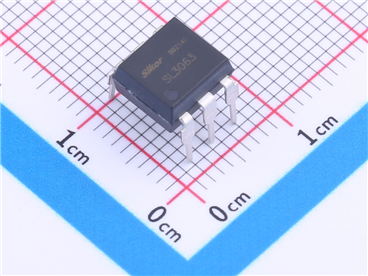Service hotline
+86 0755-83044319
release time:2022-03-17Author source:SlkorBrowse:8281
As a hardware R&D engineer, I believe I am familiar with constant current circuits. This paper introduces the schematic diagrams of the next three constant current circuits.
Triode constant current circuit

Triode constant current circuit
The constant current circuit of triode mainly uses the characteristic that the base conduction voltage of Q2 triode is 0.6~0.7V; When Q2 triode is turned on, the base voltage of Q1 triode is pulled down and turned off, and the load R1 does not work; The current flowing through R1 is equal to the current of R6 resistor (ignoring the base current of Q1 and Q2 triodes), and the current of R6 resistor is equal to the voltage of 0.6~0.7V at both ends of R6 resistor divided by the resistance value of R6 resistor (fixed), so the current flowing through R1 load is constant. Even if the VCC voltage at the power supply terminal of R1 load is variable, the circuit effect of constant current can be achieved.
Operational amplifier constant current circuit
Operational amplifier constant current source circuit
The constant current circuit of the operational amplifier mainly uses the "voltage following characteristic" of the operational amplifier, that is, the circuit characteristic that the two input pins Pin3 and Pin2 of the operational amplifier have the same voltage; When Vin is input into resistor R4 to stabilize the power supply voltage, the voltage across resistor R7 is constant, so the current flowing through resistor R7 is constant no matter how the external circuit changes. Like the principle analysis of triode constant current circuit, the current of R2 load is equal to the current of R7 resistor, so even if the power supply of R2 load is a variable voltage power supply, the current of R2 load remains constant, achieving the effect of constant current.
Apart from the constant current circuit designed by triode and operational amplifier, Chip Brother introduces another design scheme of constant current circuit, which mainly uses the voltage-stabilizing characteristics of voltage-stabilizing diodes.
Constant voltage diode constant current circuit

Constant voltage diode constant current circuit
In the constant-current circuit of the zener diode, the base voltage of the transistor Q4 is limited to the stable voltage Uzd of the zener diode, so the voltage of the resistor R10 is equal to Uzd minus the conduction voltage drop of the transistor base and emitter by 0.7V, that is, U=Uzd-0.7 remains constant, so the current flowing through the resistor R10 is constant even when the VCC power supply is variable, that is, the current of the load R8 remains constant, thus achieving the effect of constant current.
Disclaimer: This article is reproduced from "STM32 Embedded Development". This article only represents the author's personal views, and does not represent the views of Sacco Micro and the industry. It is only for reprinting and sharing to support the protection of intellectual property rights. Please indicate the original source and author when reprinting. If there is any infringement, please contact us to delete it.









Site Map | 萨科微 | 金航标 | Slkor | Kinghelm
RU | FR | DE | IT | ES | PT | JA | KO | AR | TR | TH | MS | VI | MG | FA | ZH-TW | HR | BG | SD| GD | SN | SM | PS | LB | KY | KU | HAW | CO | AM | UZ | TG | SU | ST | ML | KK | NY | ZU | YO | TE | TA | SO| PA| NE | MN | MI | LA | LO | KM | KN
| JW | IG | HMN | HA | EO | CEB | BS | BN | UR | HT | KA | EU | AZ | HY | YI |MK | IS | BE | CY | GA | SW | SV | AF | FA | TR | TH | MT | HU | GL | ET | NL | DA | CS | FI | EL | HI | NO | PL | RO | CA | TL | IW | LV | ID | LT | SR | SQ | SL | UK
Copyright ©2015-2025 Shenzhen Slkor Micro Semicon Co., Ltd